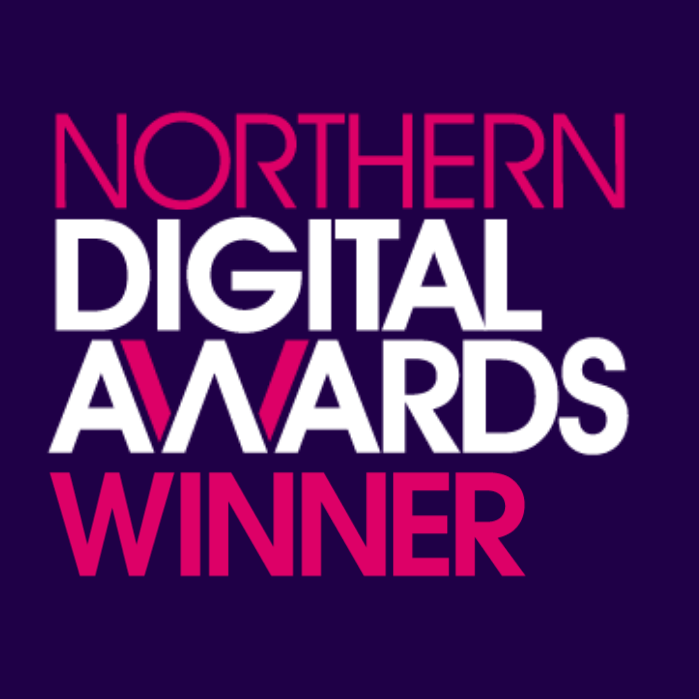5 Steps to Maximise Fashion eCommerce Sales - Using CRO, Audience Insight and Competitor Analysis to Boost Conversions
The world of online fashion is continually evolving to meet the demands of savvy consumers and how you communicate, perceive trust and provide a service is more important than ever… but that’s far easier said than done.
With ever-growing competition, there are plenty of challenges but likewise, from initial search through to the final stages of a purchase, there are many opportunities for marketers to implement new strategies and produce a positive impact for sales conversions – and customers.
Remember, this is about you working with your audience, standing out in the overcrowded digital landscape and giving shoppers the answers, opportunities, and confidence to easily buy from you.
Conversion rate optimisation (or CRO) isn’t about just optimising technical performance – it’s about creating a user-centric site with an intuitive design that guides your core audience towards a purchase.
So – to make it happen, there are 5 essential steps to follow in order to understand, engage, serve and sell to your ideal shoppers –
- Define your brand and your audience
- Do your research – products, competitors, brand and customer journey
- Present a lifestyle – not just a soulless product
- Give new and existing customers alike objectively great service
- Simplify search, avoid option paralysis and guide the customer
Let’s get started!
Define your brand and your audience
To craft an engaging shopper journey that converts well, it’s important to match up who you are as a brand and the type of products and services you offer, with specific audiences who you can be confident, will have a strong reason to buy from you.
Let’s start off simple. Ask yourself, who are you? What image and service do you want to provide? How do you achieve this? Do John and Jane Smith care about that fancy homepage animation? Is your copy providing the right message or is it just a distraction?
On average, we judge a site in 0.05 seconds and if you can’t convince them in that time that you are a safe, sensible option for purchaser then…well…you’re saying goodbye to the visitor before you’ve really had a chance to say hello.
Brands have to both differentiate themselves from the competition, while also delivering an image (and site functionality) that is familiar enough for audiences to feel comfortable, at-home and engaged enough to explore further.
The first step in almost any meaningful conversion rate optimisation strategy is to ensure that you’re not actively pushing customers away – so those initial moments (when visitors are assessing your brand, product and site functionality ) really do count.
Digital strategy and some quite traditional marketing principles around brand-building, design and the market-fit of products intersect here but central to everything is an understanding of the multiple audiences you can realistically sell to.
The more equipped you are to use data insights around their age ranges, sex, location, lifestyle and a myriad of other demographic traits, the more insight you have to provide experiences that captivate users and provide a positive experience.
While you can make very good use of heavy-duty market surveys, focus groups and so on, the fact is many of your competitors won’t have even made a start on truly getting to know their audiences.
Nathan Fulwood of CreateFuture emphasises that going down a highly complex route of testing isn’t necessary to give rich, actionable insights;
“So many teams tie themselves in knots with complicated A/B or multivariate scenarios and experiments. Avoid this. Pick one hypothesis, run it and learn. Then two, then four…”
Putting ego and assumptions to one side and using tactical surveys, straightforward A/B testing and just simply talking to your audience will open up new sources of insight and allow you to develop better experiences.
Knowing who you are as a brand (and the value of your products) isn’t just about the aesthetic elements of design or using grand language to talk about how desirable your products are.
Demonstrating quality and building interest by building your customer journey and website experience around the motivations, needs, goals, and preferences of potential shoppers – in terms of what they want from your products, and from a site selling those products – will bring them closer to a purchase.
In short – show, don’t tell.
Do your research – products, competitors, brand and customer journey
In eCommerce operations there can be some big trust barriers.
Unlike a retail store, you can’t try on, touch and investigate the products you might be interested in buying. In this sense, known brands certainly have an advantage over independents when it comes to online retail.
One way to build confidence in the desirability and quality of your products – and your ability to deliver them in a hassle-free fashion – is through reviews, testimonials and ratings.
Before you can anticipate great reviews, you first have to have a promise that you want to deliver to customers – a solid value proposition that shoppers can frame their experience against.
This isn’t just a slogan – this is the main reason or reasons why you are a logical shopping choice and why you should be chosen in this ever-expanding world of eCommerce options.
Doing the research to develop a robust and objective understanding of where you fit within your chosen market – as a premium offering or accessible, budget option – will help to inform your value proposition, meet shopper expectations and optimise conversion rates.
The goal is to provide an elegant, seamless customer journey and map up what you know about your audience and their expectations of your products into a straightforward experience.
CEO of User Vision Chris Rourke emphasises that a comparatively small amount of usability testing can produce a game-changing amount of actionable data to align your brand and on-site experience with customer expectations;
“If you want to understand the user behavior, another powerful method is usability testing.
Even with a few representative users performing realistic tasks, you can learn loads of things from their behavior and opinions that can be applied as part of an iterative continuous improvement programme.”
The more research you can do about your potential customers (and how competitors position themselves, their products and craft their own customer journeys) the more equipped you will be to provide an online experience that converts well – but a little can go a long way.
Present a lifestyle – not just a soulless product
Imagine this: a potential customer is looking for a new pair of shoes – something casual, modern-looking and a purchase that is more of a treat than a necessity – an indulgence to get excited about.
They find their way to an online shop, find the shoes they want but the images and supporting content are, let’s say, lacking.
The (clearly stock) images are relatively small in size, very compressed and coupled with a generic description.
In this case, the price point remains high but the presentation is poor – enough to make someone reconsider an indulgent purchase…or perhaps even prompt a visit to a retailer that looks more legitimate.
Nathan Fulwood emphasises the importance of having a brand that goes beyond the baselines of static imagery and genuinely communicates passion and prompts new possibilities –
“Once you have the basics down, does your brand give a licence to do something interesting – in your imagery, your product descriptions, your testimonials and reviews – that’s going to build a stronger connection and more memorable experience to your shoppers?
ASOS are great at this – from featuring a trolled shopper as a model, or men modeling women’s clothing during Pride“.
Particularly for an indulgent or aspirational purchase, it’s important to develop on-site messaging in line with a lifestyle – not just flat product content that presents a treat as just another commoditised product.
Retailers have scope to communicate passion for their own products, and go beyond flat descriptions – shoppers don’t just buy products for their use value – they buy because of how the products make them feel – about themselves, the lifestyle they aspire towards and wider themes.
Be to the point and specific; again, no jargon or industry terms – just plain language that will nonetheless communicate enthusiasm for the brand.
To maximise engagement, providing better quality, non-stock images or even videos of actual lifestyle shots showing off the item with other items you sell, with plenty of examples to showcase the product in different environments and lighting will accomplish several things.
Not only do such steps help answer immediate questions a buyer may have about how the product will look, but they also need remove uncertainty and communicate enthusiasm.
Rather than offering an experience of commoditised products, distinct from one another, you can improve cross- and upsell opportunities while advancing your brand by offering suitable related items via “what other customers also bought” suggestions or curated content with complementary styles and products.
Product pages represent an opportunity to tell a story, provide social proof through reviews and commentary and communicate passion for products while answering any lingering questions that might be preventing a purchase.
Give new and existing customers alike an objectively great service
I feel this is an obvious point, but still today some retailers forget about either type of customer when in fact both are as important as each other.
As well as giving a reason for a new customer to make their first purchase, usability is key to earning repeat business from existing and former customers.
One thing that fresh potential customers and existing customers appreciate is a clear user experience with no ambiguity about how to find and purchase the items they’re interested in.
For new customers, communicating the enthusiasm about your brand and products as discussed earlier is important, but it’s just as important to be transparent about your returns policy, sizing, pricing, delivery costs and more – the practical matters.
Beyond your products and pricing, companies can also put up barriers by demanding too much from first-time shoppers. These demands might be something a visitor can put up with for a single purchase, but they’ll implicitly or explicitly make a mental note not to come back.
So – make sure every on-page element the visitor sees has a purpose or meaning, remove any surprises from the customer journey and be transparent about costs.
Removing barriers in the checkout process and shortening signup/checkout forms by only asking for the information you truly need will build trust, and speed up the path to a purchase.
If you do want to ask for data, give shoppers a compelling reason to sign up for an account with deals, personalised products, finance and/or a VIP experience.
Making it easy for the customer to navigate and find what they want is key to transforming a new, one-off customer to a repeat visitor.
Chris Rourke emphasises that accessibility best practice to support visitors with disabilities should be built into the fundamentals of your design and user journey;
“An important part of a companies UX /CX/business strategy (for commercial and legal compliance reasons) is to ensure that the site or app enables people with disabilities to achieve their goals.
Ensure that your site developers and designers are complying with best practice (such as the WCAG 2.1 technical guidelines) so that the site can be accessed by the widest possible audience.”
By adhering to these standards, brands will very likely be improving the customer experience more generally by prioritising clarity of design and removing unnecessary barriers to conversion.
When thinking about the wider customer journey, simplifying product search, top-level navigation the path from click-throughs from email or 3rd party marketing campaigns is key – with testing of different approaches to apply real customer data to make decisions.
More than this – if the visitor still doesn’t convert, use other channels to bring them back. A case study by Sales Cycle states that of all abandoned-cart emails, 50% are opened and over a third then go on to make a purchase.
The lesson here is to think about conversion rate optimisation as a discipline that starts before a shopper visits your site, and doesn’t end even after they’ve left it and moved on.
Simplify search, avoid option paralysis and guide the customer
Unfortunately, lots of eCommerce companies fall for this and offer too many options for potential shoppers. Bombarding visitors with competing offers and options can actually have a dramatic and negative effect on conversation rate.
The problem here is that with more choice, the greater the demands are on the user to evaluate products. They may then choose the simplest option – the option to leave your site.
A powerful tool to tackle this is to add a robust approach to product searches on-site. WebLinc states, that on-site searchers are 216% more likely to convert than regular users and even spend more.
So: make things simple and relevant; don’t offer too much in terms of functionality or choice on a single page, and give visitors highly useful opportunities to find their own.
Dan Fielding, Business Analyst at St Gobain has the following advice –
“Don’t just “set and forget” your on-site product search”
One of the easiest ways to increase conversion rate and spend on your eCommerce site is to optimise your on-site product search.
Modern eCommerce platforms are equipped with a range of features for managing synonyms, redirecting common searches to custom page, or personalising search results based on customer segmentation.
Giving users the tools to navigate effectively is key – and the more of the work you can do for them by applying customer insight and segmentation, the better.”
Of course, while there are challenges to having too many products, offering too little can be just as bad. As with many aspects of conversion rate optimisation, it’s a balancing act to attract, engage, sell to and service shoppers in highly competitive markets.
One familiar method to guide visitors towards a purchase is the sensitive use of an exit-intent overlay.
An exit-intent overlay is essentially a pop-up which, deployed correctly, can offer a subtle incentive to stick around, sign up or make a purchase if users look like they’re going to navigate away from your site.
Another aspect is to work on is visual hierarchy. We, humans, tend to organise everything we see and base/judge it all on size, colour, position etc.
So – something that is bigger, brighter and at the top of a page will have more importance than something small, dull and at the bottom.
Use this to lead users through your pages and choices and grab their attention using headlines and calls-to-action with larger and contrasting elements and also descriptions and features that are smaller.
This then allows the user to scan quickly and not be overwhelmed while finding their own way to the products they desire. Ultimately, these are all just methods to give help site visitors to help themselves.
Coming back to search functionality, Dan Fielding recommends developing a complete understanding of the tools you have available, but retaining a customer-first mindset with empathy for how they search;
“Get to know the tools at your disposal, then regularly review your most commonly searched terms. Repeat the searches as a customer and try to find ways to make the results more effective.
Tweaking the on-site search configuration can get you a lot of quick wins, but the real value comes when you bring in others from across your organisation to help solve the problems you find.
An effective on-site product search isn’t just a content problem to solve, or a UX or technical one. It’s an area that benefits from collaboration across teams, but get it right and it will pay dividends for a long time.”
There are many tools and techniques available to guide visitors, but they have to be intelligently actioned in order to avoid annoyance.
At Blueclaw we have a proven toolkit and methodology to keep visitors engaged to maximise conversion rate – get in touch if you’d like to experience this for your brand.
Summing up
Conversion rate optimisation discussions can often be too focused on software technology and data insights, rather than a blended approach based on rich testing insight, along with more qualitative understanding of brand, audiences and building brand value to deliver results.
From defining your brand and audiences through to crafting on-page experiences that match up with their interests intent, through to how you sell to and serve shoppers – there’s a lot that goes into eCommerce conversion rate optimisation.
However, that just means that the rewards for the companies who get it right are all the greater.
Interested in taking your CRO, SEO and digital experience strategy further? Talk to the Blueclaw team for straightforward tips, industry insight and support today.





